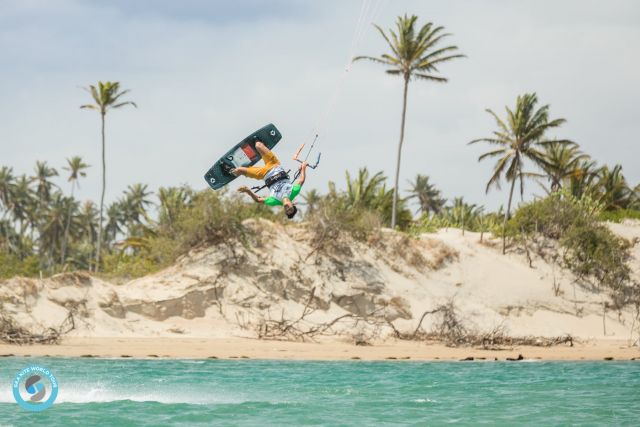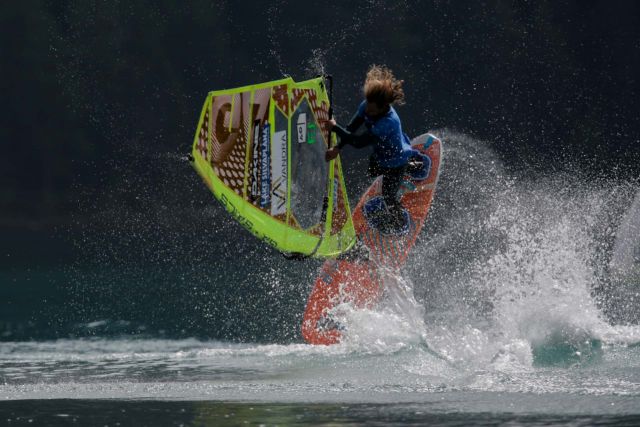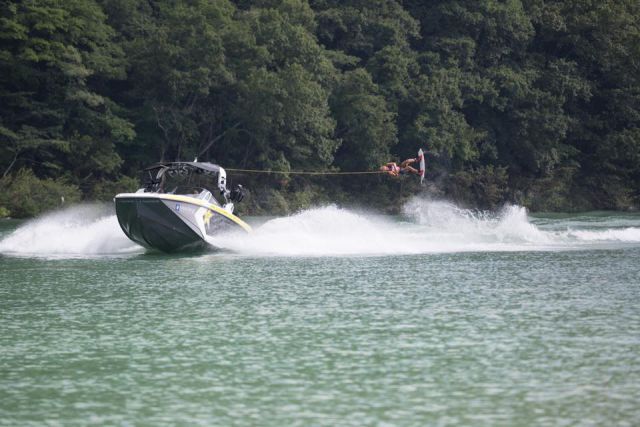For the very first time, Open European Water Ski Championships will be held from 13 to 17 August 2014 in the Czech Republic. The challenging organization of the whole tournament has been undertaken by František Stehno, legendary Czech skier and 4 time European Champion between the years 1972 – 1977. Among other titles, František Stehno was able to place second at the World Championships and held the European Trick Record. The tournament will be held in Stehno Marine Club, a water ski facility that he has been building ever since the end of his professional career. We are committed to making this a spectacular championship and we certainly hope to see you all in August!
Water Skiing
Water Skiing is a surface water sport in which an individual is pulled behind a boat or a cable ski installation over a body of water, skimming the surface on two skis or one (slalom) ski. The sport requires sufficient area on a smooth stretch of water, one or two skis, a tow boat with tow rope, three people, and a personal flotation device. In addition, the skier must have adequate upper and lower body strength, muscular endurance, and good balance. Skiing is a fun pastime that allows people of all skill levels and ages to enjoy. There is no minimum age necessary to waterski.
Slalom
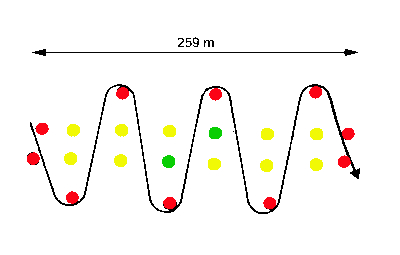
In an attempt to become as agile as possible, slalom waterskiers use only one ski with feet oriented forward, one in front of the other. Slalom skis are narrow and long, at 57–70 inches (145–178 cm) depending on the height and weight of the skier. The two forward-facing bindings vary: they can be made of rubber or thick plastic, and they can be designed more like a snow ski binding or more like a roller blade boot.
Slalom skiing involves a multi-buoy course that the skier must go around in order to complete the pass. A complete slalom waterski course consists of 25 buoys. There are entrance gates at the beginning and end of the course that the skier must go between, and there are 6 turn buoys that the skier must navigate around in a zigzag pattern. The remainder of the buoys are for the driver to ensure the boat goes straight down the center of the course. For a tournament to be sanctioned as 'record capable' by the International Waterski & Wakeboard Federation (IWWF), the entire course must be surveyed prior to competition by a land surveyor to ensure its accuracy. The drivers boat path must be verified as well to ensure that all skiers are getting a fair pull.
Jump
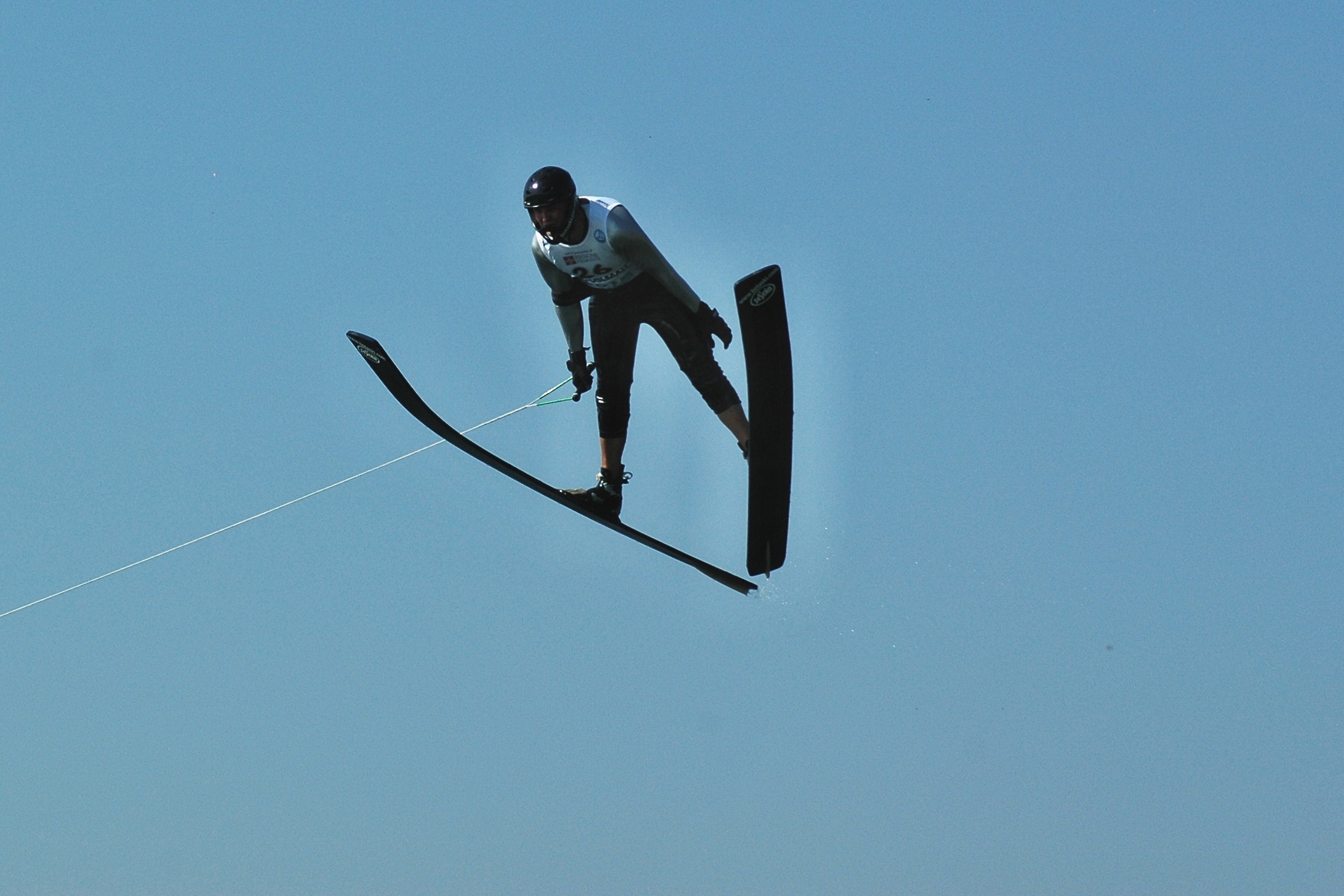
Waterski jumpers use two long skis to ride over a waterski jump in an attempt to travel the longest distance. In a tournament, skiers are given three attempts to hit the ramp. The winner is the skier who travels the farthest calculated distance and successfully rides away for at least 100 feet (30.5 m). There are no style points, simply distance.
Waterski jumps have specific dimensions and the ramp height is adjustable. Skiers may choose their boat speed and ramp height, although there are maximums based the skier's gender and age. Professional ski jumpers have a maximum boat speed of 58 kilometres per hour (36 mph). The ramp height must be between 5 and 6 feet (1.5 and 1.8 m). As a professional jumper approaches the ramp they will zigzag behind the boat in a series of cuts to generate speed and angle. When the jumper hits the ramp they will generally be going over 112 kilometres per hour (70 mph) and the load they have generated on the rope can be over 600 kilograms (1,300 lb).
Trick
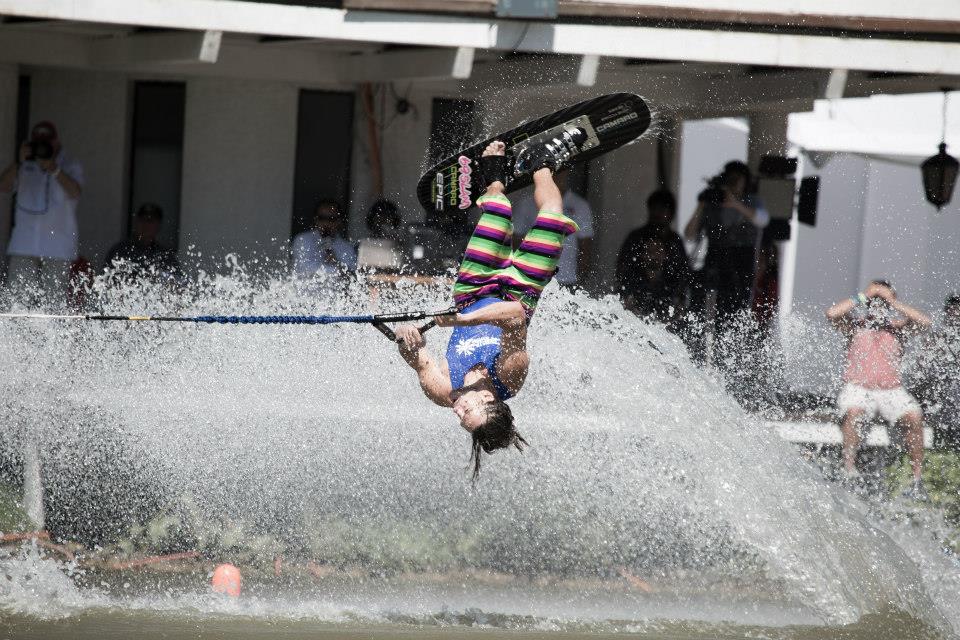
The Trick competition has been described as the most technical of the three classic water skiing events.
Trick skiing uses small, oval-shaped waterskis. Beginners generally use two skis while more advanced skiers use one. The shorter, wider Trick ski has a front binding facing forward and a back binding facing at a 45°. It has a smooth bottom that allows it to turn over the surface of the water. According to official 2013 Tournament Rules for 3-event competition in the United States and the Pan-Am Games, skis used in the Tricks event must be a single ski without fins, although molded rails/grooves less than 1/4" are allowed, as are a foot pad cemented to the ski as a place for the rear foot; in addition, the ski must float with all bindings, fins, etc., installed. The ski's configuration allows the skier to perform both surface and air tricks in quick succession.
In a tournament, skiers are given two 20-second runs during which they perform a series of their chosen tricks. One pass is for hand tricks, which includes surface turns, rotations over the wake, and flips. The second pass is for toe tricks, which are done by doing wake turns and rotations with only a foot attaching them to the handle; the foot is either in the toehold part of the handle or, professionally, attached to the rope. A trick cannot be repeated. Each trick has a point value. A panel of five judges accesses which tricks were competed correctly and assigns that predetermined point value to each successfully competed trick. The skier with the most points wins.







 In an attempt to become as agile as possible, slalom waterskiers use only one ski with feet oriented forward, one in front of the other. Slalom skis are narrow and long, at 57–70 inches (145–178 cm) depending on the height and weight of the skier. The two forward-facing bindings vary: they can be made of rubber or thick plastic, and they can be designed more like a snow ski binding or more like a roller blade boot.
In an attempt to become as agile as possible, slalom waterskiers use only one ski with feet oriented forward, one in front of the other. Slalom skis are narrow and long, at 57–70 inches (145–178 cm) depending on the height and weight of the skier. The two forward-facing bindings vary: they can be made of rubber or thick plastic, and they can be designed more like a snow ski binding or more like a roller blade boot. Waterski jumpers use two long skis to ride over a waterski jump in an attempt to travel the longest distance. In a tournament, skiers are given three attempts to hit the ramp. The winner is the skier who travels the farthest calculated distance and successfully rides away for at least 100 feet (30.5 m). There are no style points, simply distance.
Waterski jumpers use two long skis to ride over a waterski jump in an attempt to travel the longest distance. In a tournament, skiers are given three attempts to hit the ramp. The winner is the skier who travels the farthest calculated distance and successfully rides away for at least 100 feet (30.5 m). There are no style points, simply distance. The Trick competition has been described as the most technical of the three classic water skiing events.
The Trick competition has been described as the most technical of the three classic water skiing events.